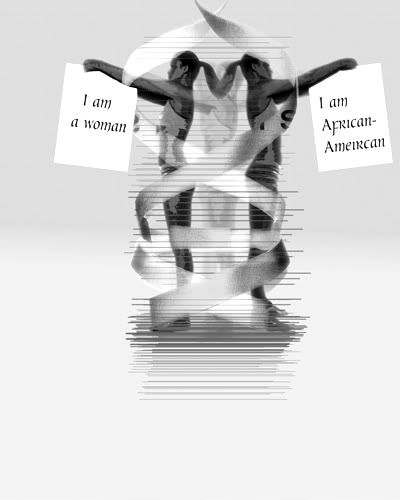
Feminism complicated by being "African-American"
28.10.05
A Mix Tape of How It Feels To Be With You
As I am apt to do such things...
1. Till There was You - the Beatles
2. Sadie - Joanna Newsom
3. My Wandering Days are Over - Belle and Sebastian
4. Super Me - Velvet Teen
5. I Found a Reason - Cat Power
6. Hardest Geometry Problem in the World - Mark Mothersbaugh
7. Takk - Sigur Ross
8. Concerning the UFO Sighting near Highland,Illinois - Sufjan Stevens
9. Sunshine and Clouds - Clap your Hands Say Yeah
10. The Luckiest - Ben Folds
at 3:04 PM
23.10.05
On a different note...
Let me pose two questions... or maybe a question and an observation... or would that rather be two observations?
1) Why is it that people often use the phrase "impending doom". Does doom always have to impend? What about an inevitable doom, or a doom-in-progress, or a concurrent doom? Something of that sort?
2) I just saw a photo of a memorial of sorts in Nagasaki with the inscription "God is Love." I wonder, if god is love, and love is the feeling I have toward Jon, then maybe God isn't so bad after all. Because if God is indeed love and if he repressented the totality of all the good memories I've had, then he can't be all that bad.
Back to toiling. Isn't it funny. That sounds like Toilet. Toiling is Crappy.
On a good note, and very much related to toilets and crapping, I talked to Songhua and asked if I could get switched out of Sunday Bathroom Crashing and very kindly obliged. Yay for kind House managers.
at 11:33 PM
Why virtual relationships are purer?
The literature also suggests several reasons for why this might occur. For example,
Walther (1996) suggested that one of the reasons why hyperpersonal interactions – interactions that are more intimate, more intense, more salient because of the communication channel – occur in CMC is because participants can reallocate cognitive resources typically used to maintain socially acceptable non-verbal gestures in face-to-face interactions and focus on the structure and content of the message itself. The message itself then comes across as more personal and articulate. Indeed, in virtual worlds where we do not have to constantly worry about how we look and behave, we would be able to dedicate more cognitive resources to the message itself.
Nick Yee's paper on MMORPG's
at 1:45 PM
21.10.05
A Better Image?
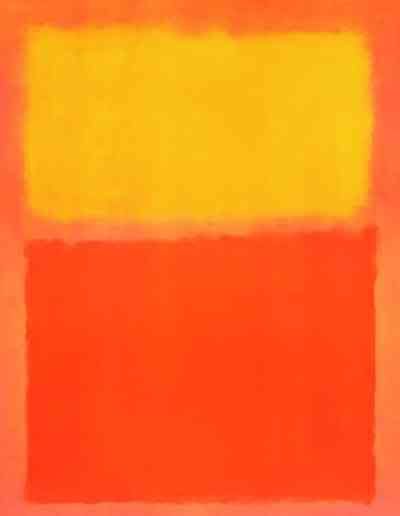
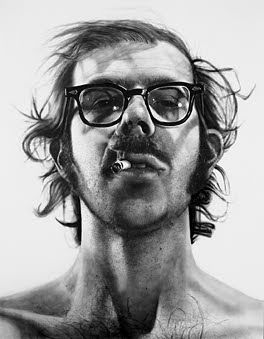
Which is the better image?
The only information you have:
Mark Rothko. Orange and Yellow. 1956
47" X 39"
"I favor the simple expression of the complex thought"
Chuck Close. Big Self-Portrait 1967-1968
107.5" X 83"
"paintings first and portraits second"
at 10:19 AM
Those Crazy Italians
MANIFESTO OF FUTURISM
1. We want to sing the love of danger, the habit of energy and rashness.
2. The essential elements of our poetry will be courage, audacity and revolt.
3. Literature has up to now magnified pensive immobility, ecstasy and slumber. We want to exalt movements of aggression, feverish sleeplessness, the double march, the perilous leap, the slap and the blow with the fist.
4. We declare that the splendor of the world has been enriched by a new beauty: the beauty of speed. A racing automobile with its bonnet adorned with great tubes like serpents with explosive breath ... a roaring motor car which seems to run on machine-gun fire, is more beautiful than the Victory of Samothrace.
5. We want to sing the man at the wheel, the ideal axis of which crosses the earth, itself hurled along its orbit.
6. The poet must spend himself with warmth, glamour and prodigality to increase the enthusiastic fervor of the primordial elements.
7. Beauty exists only in struggle. There is no masterpiece that has not an aggressive character. Poetry must be a violent assault on the forces of the unknown, to force them to bow before man.
8. We are on the extreme promontory of the centuries! What is the use of looking behind at the moment when we must open the mysterious shutters of the impossible? Time and Space died yesterday. We are already living in the absolute, since we have already created eternal, omnipresent speed.
9. We want to glorify war - the only cure for the world - militarism, patriotism, the destructive gesture of the anarchists, the beautiful ideas which kill, and contempt for woman.
10. We want to demolish museums and libraries, fight morality, feminism and all opportunist and utilitarian cowardice.
11. We will sing of the great crowds agitated by work, pleasure and revolt; the multi-colored and polyphonic surf of revolutions in modern capitals: the nocturnal vibration of the arsenals and the workshops beneath their violent electric moons: the gluttonous railway stations devouring smoking serpents; factories suspended from the clouds by the thread of their smoke; bridges with the leap of gymnasts flung across the diabolic cutlery of sunny rivers: adventurous steamers sniffing the horizon; great-breasted locomotives, puffing on the rails like enormous steel horses with long tubes for bridle, and the gliding flight of aeroplanes whose propeller sounds like the flapping of a flag and the applause of enthusiastic crowds.
Hey they made some good art.
at 8:41 AM
19.10.05
Oh Paper-age
"There is an inherent truth which must be disengaged from the outwared appearances of the objected to be represented... Exactitude is not truth"
-- Matisse
at 7:14 PM
Revived? Sort of
My computer feels like a wilting patient just coming off of a really bad accident. It is quite delicate. Every now and then (i.e 15 minutes) I have to restart it because of a memory allocation error. Further, I now cannot upload any USB devices into it and currently have zero working applications on my computer. However, this "internet" capacity has now put the world at my fingertips as Jon puts it.
I hope that the problems get fixed soon enoough and my computer be restored to its old glory.
at 7:08 AM
18.10.05
Lao-tzu knows it
manifest plainness,
embrace simplicity,
reduce selfishness,
have few desires.
-Lao-tzu
can I really do that?
an interesting world view.
at 9:37 AM
17.10.05
Naoto Fukasawa

Naoto Fukasawa is a really really amazing designer. He has a sense of humility and skill in designing his products that is astounding. In the world of 3d Cad and easily-modifiable curvilinear surfaces so commonplace in consumer products it is refreshing to find someone so honest, so skilled with such an economical use of visual and design cues. I like Fukasawa because of his attitude as a designer. He says that really good designs show the absence of the designer's ego, an attitude very rarely found in contemporary western design (i.e. Rashid and his ilk) 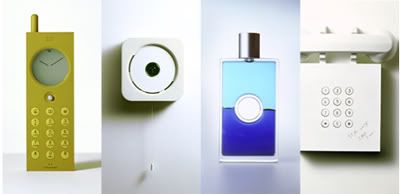
Here is another direct quote:
“My approach to design is located somewhere between the subjective and the objective. In plus-minus terms it might appear to be all about adding and subtracting, but that isn't what it's about. I locate myself at zero, the ideal median point. You don't notice when it's not necessary to do so, but if you look closer, you can see that it's been well thought out. What I do therefore is to give the design some depth so that people who appreciate such things are able to do so. People who aren't concerned about such matters can just get on and use the products and become absorbed in this action. In order to maintain both these elements, it's essential that neither is too obtrusive and that an ideal balance is maintained. Depending on the situation and the context, the design may seem to make the product very easy to use. On other occasions, the design blends into the environment without stressing its identity, playing a role behind the scenes as it were. This is what I mean when I talk about “plus-minus zero.”

I suppose my approach has something in common with the affordance approach and in that respect differs from previous types of design in which the emphasis is placed on the identity and impact of the object itself or on deliberately avant-garde forms of expression. It's all about discovering the essence of new design as it lurks within everyday life as represented by the idea of uncovering things there to be found. What I try to do is to discover the essence of new design latent in the everyday environment.”
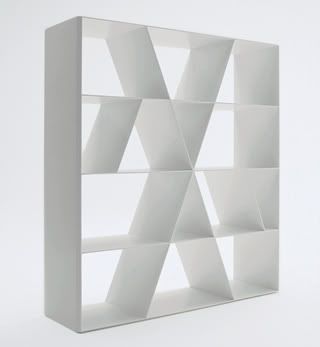
Fukasawa also has a visual aesthetic that is minimal and almost anti-technical and really ANTI-CAD looking that is very attractive. He has a sensibility for "the simple" and for products that find its value with its relation to its environment. His works ofter spur a sense of desire for the mundane and for the ordinary.

“I think about what is “iconic” for a sofa or a watch. I am not thinking to expose myself, I am thinking more about the common view of products. If I make something iconic then people say, ‘Oh, I know this one!’ – but I ask them, ‘Why do you know, because you haven’t seen it before!’ It means I am interested to describe how people already share something. Does that make sense?”

"Fukasawa’s search for the “iconic” product, the product that communicates its function and identity so efficiently that people recognise it automatically, means that his work cannot be overtly radical. “If I wanted to design a completely new nice telephone I can’t remove the image of the ugly old telephone because people’s image of the telephone is of the ugly old one,” he says. “I gently show new things and mix them together.”
“People say I’m a good creator of ideas, but I’m more a good shape-maker. Really, you need a good form-making designer who can make good ideas. But I’m on the other side. Give me an ugly object and I can make it better like magic.”
Ideo's Profile of Naoto Fukasawa
at 7:15 PM
Revolutionary Tides

Jon was here over the weekend. We went to see the Revolutionary Tides show at the Cantor Arts Center. It was really amazing. I thought it was interesting how varied cultures even with diametrically opposed political views could coalesce in the visual representation of their ideologies. The Russian posters were the most stunning I thought. For some reason American painting always seems so ordinary and watered down, and mainstream, secular. I wonder if I think that because I actually live in America and the visual vocabulary has become so banal, or if American graphic designers are just inferior?
at 7:03 PM
Design: Oscillations of a Multifaceted Identity
Every machine is a spiritualization of an organism
The existing discourse in design is framed in the context of form vs. function, machine vs. natural aesthetic, bourgeoisie vs. cultural elite, modernism vs. primitivism, and the commercial vs. ethical. Often in western tradition, opposing dichotomies exist to help deconstruct highly nuanced categories. Thus, in the history of design we are often presented with these notions in tandem and often opposed to each other as though implying that design has been a struggle between opposing predominant trains of thought. However these rough demarcations often mask the dynamic nature of the discipline and its more frequent oscillations and the existence of design artifacts that simultaneously hold various opposing categories. While it is arguably naïve to opt for an overarching structure of design that encompasses all these definitions it is reasonable to postulate that good design can span these irreconcilable polar opposites and often embrace a previously unacceptable norm. Design finds rich and salient manifestations by a process of systematic integration with the patterns of human action. Design ultimately achieves this by mediating between vocabularies that have previously been obtuse or situated within a cultural, economic, technical, or artistic minority and cast them in a vocabulary that is at once accessible, multifaceted and ultimately human.
We see these binary and seemingly contradictory themes dictate the philosophies and design in the canonical figures of design history as well as in the design of objects and selection of culturally relevant artifacts. This is especially evident in the debate between Hermann Muthesius and Henry van de Velde and in the stark differences of points of view between Raymond Loewy’s capitalistic zeal for reinventing product identity and Henry Dreyfuss’s user centered “design is for people” approach, or with the move toward ornamentation with the arts and crafts movement in contradiction with the sparse rationality of the international style. During the Werkbund Conference of 1914, Van de Velde expresses a distrust of anything that might sterilize his actions and stifle his freedom of thought or a ‘universally valid form that he sees only as a mask that seeks to make a virtue out of incapacity (). In contrast, Muthesius had a faith in standardization as a means to creative a clear design language that will be distinctive of the Germans. He also believed in the simplicity of forms and in the creation of objects that embraced the new possibilities created by the industrial revolution rather than spurn them or rein them in with selective design. Muthesius and Van de Velde both sought an authenticity in design that expressed honesty and an unequivocal expression of a point of view. Muthesius, like the many functionalists and anti- ornamentalists that follow him ( eg. Le Corbusier, Loos, Bauhaus, The Ulm School) believed that purity of form was nothing more than a symbol for a purity of mind and therefore a more sincere expression of design. Van the Velde and the others who have design philosophies akin to his (Mcintosh, the Eames, the Memphis design movement) sought to have a more vital and artistic approach to design, to be able to express creative and individual expression into design. These divergent attitudes toward design fail to underscore its main goal, that is to create an effectively constructed and well communicated form that expresses clarity in its function, execution and ability to engage the user whether it is through engaging his different senses, enabling the user to perform a task or to appeal to his aesthetic or philosophical tastes. Design is a dangerously all-encompassing label with numerous categories in its orbit and opposing ideas in its history. It is often seen as a totality of various points of view whether technological, social, emotional, rational, ethical, aesthetic, and cultural. Thus we come to the realization that any conclusive definition of design is impossible. One could only guess as to the many permutations of design that exists. However one could argue that there is successful and unsuccessful design and therefore its various manifestations have been subject to a value judgment determined by present cultural norms and history. Successful design relies on a clarity and honesty of intent and execution that communicates a sense of utility and pleasure in its usage. While the polar opposite characterizations of design give insight into the concerns that go into these definitions, there are points of convergences where anomalous categories exist, things which transgress the binary divide and hold a particular interest for me because it points to a particularly strong and richer design point of view. These critical points exist in the different facets of design and I will outline clearly how they have been played out and resolved throughout design history.
Technology (the logical and aesthetic language of design)
The triumph of the industrial revolution ushered in the first incarnation of the break down of what is arguably the most visible of these dichotomies (form vs. function). Since the separation of art and craft during the Renaissance, the practice of design (i.e. the process of planning and executing products that have functionality as its primary interest) has had a separation with the motivations of art for art’s sake. Thus the world was filled with artworks unsurpassed in their value as objects of ornament and cultural productions and objects that were highly mundane but functional. However, the advancement of engineering as a profession together with the advancement of mechanical and electrical technologies lead to a proliferation of structures and objects that whose beauty were a strange and unexpected side-effect of their mechanical efficiencies. It is especially notable that these devices were not intended to be objects of design, or designed to be objects of desire, or intended to be anything other than its explicit function deriving from its compliance with the laws of physics and scientific experimentation. Nothing could be farther from our conception of design as an integration of a completely rational and objective object into the sphere of well designed objects. Thus giant electric generating turbines, engines, and industrial artifacts became the inspirational driving force behind the Futurist movements, Le Corbusier’s reconception of life as a mechanical problem and ultimately to the Bauhaus principle of using the powers of industrial production in the service of beauty. So we see a constant oscillation between the different purposes of technology and its relationship with beauty, personal expression and design. Initially technology has, to quote Richard Buchanan in his essay, Declaration of Design: Rhetoric, Argument and Demonstration in Design Practice, provided the logos of the design argument. Design which Buchanan contends is a “rhetorical activity that relies on technology to be the backbone of a design argument […] In essence, the problem of technological reasoning in design is the way the designer manipulates materials and processes to solve practical problems of human activity”( Margolin, 98). This activity might sound rather banal and certainly technology has been initially viewed as the mere enabler of design thinking, the means through which ideas ould be executed to their full completion. The sudden break in this interpretation occurs at the onset of modernism where we shift from viewing technology as a means to execute design to the embodiment of good design. It is not the way to achieve design, it is good design. The engineering and scientific process is then cast as a valid design methodology one that when wedded with previously ‘artistic’ domain of design has produced stunning results. This movement evolved from genuine acceptance of the nature of technology, the celebration of the machine and an awareness of the present that was radically different from the past. It is even arguable that this respect for the objective and self effacing design methodologies of the engineer that address problems at their fundamental physical and compositional underpinnings has trickled into the prevailing value in art criticism. The art critic Choicy highlights the importance of form as the logical consequence of technique and the value of technique and construction in the creative process. The architect and designer is expected to make an educated appraisal of the problem before him after which the form of the building would logically follow from the technical means at his disposal. This casts design solutions and gives it a claim to ethos, a rightful place that is not merely a superficial indulgence. This paradigm in design thinking holds particularly true today with the technological revolution and the miniaturization of technologies and the silicon revolution. With Moore’s Law and a continuous packing of circuit elements increasing by a factor of 2^(1/2)every year it is hard to say what new paradigms of design thinking could be achieved as a result of this revolution. However, technology has served both as design inspiration and design enabler. It has inspired many an art movement, Futurism and Cubism to name a few. Thus it has been able to simultaneously hold these disparate categorizations gracefully. Today, technology at its rawest is hardly accessible to the general public. Design has taken equations, scientific formulae, and engineering diagrams to tangible entities that provide delight, utility and gain public acceptance.
Social
Products have an undeniable ability to change lives. A professor and I were having a conversation yesterday and my watch, like most digital Casios, has been set to beep every hour on the hour. “Is it seven already”, he inquired. I had informed him that I set my watch 4 minutes fast just to make sure that I get to my lectures on time. After hearing this he expressed regret that he had recently purchased a new cell phone with an automatic time set-up being fed from an atomic clock sent through a digital signal. He jokingly said that it felt like being trapped in a universe were time was set out in unchangeable increments. My Casio afforded me the ultimate power over my destiny – the time set-up button.
Design has a way of coordinating lives and lifestyles. It integrates objects into social activities. A successful design is a conflation of the technological or artistic devices that enable it, the current social conditions that choose to accept a certain design point of view. It is a process of bestowing things with added value. Design links the economic to the cultural. It is a way of restoring meaning to an array of simulacra, combating the presence of meaningless objects. This goal is at odds with the present phase of the capitalist development where market conditions are dictated by the desire and buying patterns of consumers. Thus more theoretical modernist design tenets are at odds with the anonymous developments in technique industrial production and consumerism. Our society has created an infrastructure where the designer has massive reach and influence because of the power of mass production. This is at odds with the design of high culture which often seeks to be a cultural minority. The task of the designer is a difficult one for he or she must create meaningful products in a world where millions of people could potentially be using their products. The power of multiples and the masses has an ability to bring design to its lowest common denominator as evinced by the questionable products on the shelves of Walmart today. The designer caters to a market with certain tastes dictated by psychological, social and historical patterns. We often see designers foisting their visions upon a seemingly unknowing public and while it might be an act of bestowing normative value onto objects more mechanisms are at play here.Design is architectonic and has the ability to coordinate various modes of production giving it order and purpose. Design provides the methodology behind the thought of idea it organizes all levels of production and coordinates human production and activity at various levels.
Culture
“As long as a universal high level of taste has not been achieved, we cannot count on German arts and crafts making their influence effectively felt abroad.”—Hermann Muthesius (Gorman, 89)
The development of products that gain the appreciation of a universally valid, unfailing good taste has been a goal of most designers. This was one of the motivations for Muthesius to call for standardization and the acceptance of industrial production to aid in the creation of objects. However, the process of achieving a convincing stylistic expression has often been overused by some designers to gain competitive advantage by superficial means. Guy Julien, in his book, Material Culture argues that “the fundamental problem is the seemingly inexorable tendency of the excellence of material culture toward attenuation, superficiality and even disappearance.” The problem of creating products that maintain a sense of integrity in the face of powerful shaping material culture resurfaces again. Cultural capital which is the ability to distinguish between the cultivated and the vague seems to be one of the things most designers keep in mind during the design process. Higher cultural capital often suggested a more cultivated or civilized background and this is why certain designer objects are cast as expensive almost extravagant useless things saved only by their claim to high cultural capital. Thus well designed objects of today are often turning objects into highly desirable elitist artifacts. Ettore Sottsass sought to break this tradition of elitism turning to the creation of more well rounded objects rather than creating indulgent and esoteric high culture designs.
Another example of the appearance of self-indulgent designer’s products is the Juicy Salif created by the designer Philippe Starck. Earlier there was a natural evolution of functional products whose main design vocabulary is that of their ability for utility, how did a completely useless object like the juicy salif come into being and much notoriety in the world of design objects? Starck himself has been known to have said “this is not a very good lemon squeezer: but that’s its not its only function. I had this idea that when a couple gets married it’s the sort of thing they would get as a wedding present” ( Julier, 68) This sheds light on the value of cultural capital; the designer himself has explicitly said that the lemon squeezer has problems with its functionality, but it is viewed almost as an art product, a completely useless artifact that gains public interest because of the intangible.
Despite all these divergent and convergent distinctions in design, we realize that it is nothing but the process of clear articulation and conception of a device that fulfills its objective whether it is to function as an object of utility or pleasure. Mechanical, formal compositional, social and cultural ramifications of objects all filter into the design and help give it its multi-faceted identity. This process of selection and creation with the end user ultimately in mind helps clarify previously distorted, obscure or esoteric knowledge and disciplines into a language that can be understood by everyone. Design is no longer concerned with just the object but with the totality of different infrastructures that surround and contain it. Like a well versed argument well designed objects not only achiever their goals as tangible entities in the world but have far more long lasting ramifications into our social lives, histories and identities for they reflect our rational, ethical and emotional desires. Design is therefore never a compromise between opposite dichotomies but rather a dynamic and pluralistic reflection of our own multifaceted humanity.
Works Cited:
Buchanan, Richard, Margolin, Victor ed. (1986) Declaration by Design: Rhetoric, Argument, and Demonstration in Design Practice Design Discourse, University of Ilinois Press
Julier, Guy (2000) The Culture of Design, Sage Publications London
Muthesius, Hermann, Van de Velde, Henry Gorman, Carma ed. (2003) Statements from the Werkbund Conference of 1914. The Industrial Design Reader, Allworth Press
at 6:56 PM
16.10.05
14.10.05
Graphic Novels
Demian 5 is a really beautiful online graphic novel. If you are looking for good graphic novels in real life, Jimmy Corrigan The Smartest Kid on Earth is also pretty good.This looks promising.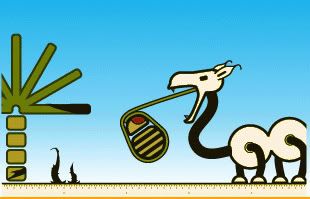 Demian 5
Demian 5 
at 11:00 AM
10.10.05
Foam and Feet
I got up this morning staring at my feet. As I looked at them I thought that they were distinctly "adult" looking. Like I was looking at the feet some lady not me.
After 16 hours of nonstop sanding, I finally finished my foam form studies.
I hate sandpaper, and foam and many other things. Went out to dinner with the functionless buttons last weekend. They all laughed when the waitress gave me the biggest sized plate and what looked like 5 times the amount of food that I could actually consume. Afterwards we sat around in Rayna's beautifully decorated room and drank tea as the estrogen in the room continued to engulf us all. I head-cooked last friday. I made Filipino food (for 80 people). Everyone liked the rice cake and the lumpias. They were stuffed full of shrimp. I got a standing ovation.
Stanford is bathed in a really nice radiant light. And I wonder if that is because I'm not stressed out nowadays. 
My. Boyfriend. Is. So. Hot.
at 4:35 PM
6.10.05
Graffix

Here is a graphic I did for the daily. I was inspired by the way Matisse emphasizes movement and human form through the use of curvilinear forms (or what my prof calls the Arabesque). Interestingly, the onset of modern art was brought about by the turn towards the primitive by Western "avant-garde" artists appropriating the racial other. This has absolutely nothing to do about this graphic. Anyway, just an art historical thought for the day.
at 10:45 PM




